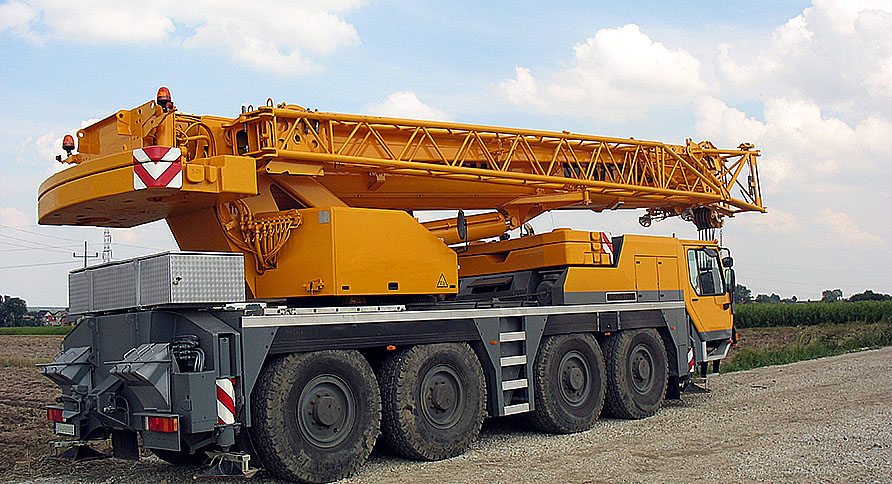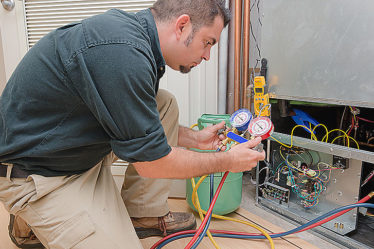
An overhead crane is one of the most popular types out there. It comes in different sizes, loaded with many features to help move extremely heavy loads. However, a major factor that differentiates overhead cranes from other types is its installation. Overhead cranes need to be disassembled and assembled before they can be used at a particular location after getting them crane for rent companies. So, let’s take a look into what overhead crane installation is all about.
What Happens Before The Installation Of An Overhead Crane?
Before an overhead crane is installed, both the customer and the rental company sit down to discuss the installation process. This usually takes place during the quotation process. The main purpose of the discussion is to discuss the blueprints, location, and installation process so that the rental company could provide the customer with an estimate.
The reason is that the rent may differ depending on the location. In the quote, the rental company will/crane installer will provide a time frame to the customer in which the crane installation will complete. The completion depends on various factors such as weather conditions and location etc.
If the location is difficult to reach and the weather is extreme, it might slow down or pause the process entirely. Generally, it takes 2-10 days to install an overhead crane if everything goes according to plan. Plus, the installation process is continuous once the rental company has provided the customer with all the equipment.
The reason is that stopping, restarting, or breaking up their team will increase the installation cost. Therefore, it is important as a customer that you have everything ready beforehand instead of being clueless with the rental company.
Choosing the right overhead crane is a complicated enough task alone and installation is another. So, you need to have a map of your location, the condition of the terrain, and other necessary information with you so that the rental company or the crane installation service can plan for safe installation.
Evaluating The Scope Of Work
Once you have agreed on the rent and all the other related information, the rental company will provide you with a copy of the order. In a day or two, the crane installer is going to contact you and your team and will visit your construction site to discuss the installation.
This is where the crane installer will ask for all the necessary information about the location such as the map, the condition of the terrain, obstructions, etc. At the same time, the installer will also be estimating the amount of space the crane will utilize.
Keep in mind that you should not try to hide any information from the installer. Installing an overhead crane requires a list of equipment such as generators, lifts, trucks, and other items. Access to these items should be clear and easy.
If the transportation of the equipment is relatively tricky due to the construction site, the installation process will prolong.
Reviewing The Area Of Overhead Crane Installation
At the construction site, the crane installer will spend a good amount of time discussing where and how the crane will be installed. The installer may even inquire things from the crane services VA about the specifications of the crane.
Overhead cranes are usually big and the installer will consider the surrounding area as well. Once the installer has estimated the amount of space required, you will need to cordon off the area.
At the same time, the installer will also be speaking with the subcontractors for the installation of electric and gas lines, light fixtures, plumbing, and other tasks. According to industrial standards, the installer or the subcontractors will mark the areas where the crane can be easily installed. This helps the installer identify areas once the equipment arrives.
Meanwhile, it is your job or you can request the crane installer to help remove any obstacles that might make transportation difficult. As mentioned earlier, access to the job site should be clear. Otherwise, you will be incurring costs and causing scheduling issues if the installation process delays each time.
Identify Potential Hazards
This is the most important part of the installation process and comes before the crane installation. Identifying potential hazards is key to ensuring the safety and protection of the individuals involved. Then again, overhead cranes are huge machines and can easily cause extreme damage if they were to fall or imbalance.
That said, the installer will identify all the potential hazards and prepare the team accordingly. Depending on the location, the installer may be required to acquire a permit from the local authorities. Some of the most important factors the installer will consider are the traffic, energy, working heights, and any other potential hazards identified by the customer.
Working in areas where there is high human traffic and power lines installed around every corner can be difficult and requires special consideration. Any mismanagement can lead to accidents and financial and human loss.
Review The Crane’s Runway System
Once the potential hazards have been identified, the installer will review the crane’s runaway system. Overhead cranes can either run on an existing platform or will require a new runway system to be built. If the crane is to be installed on an existing runway, the installer will inspect it for any defects.
A misaligned runway system will cause trouble and may lead to accidents. To avoid such situations, a detailed inspection of the runway is performed to ensure the crane functions without any risks. However, in the case of a new runway system, the installer will gather all the necessary information and plan the installation accordingly for the installation process to go smoothly.
Load-Test The Newly Installed Crane System
After days of the installation process, you will finally come to the last part which is resting the newly installed crane system. This is yet another important step before you use the crane for extremely heavy loads. According to industrial standards, you are required to test the crane to ensure everything is in perfect working order.
Furthermore, you are bound by law to run different types of tests and record the data in a file that can be easily accessible if required. Keep in mind that the state authorities overlook such tasks as well. This means the maintenance and inspections will also be recorded. Considering their size and the risks they pose to the environment; the cranes need to be in perfect working condition each time they are used.
On the other hand, the loads should be weighed to prevent the crane from exceeding its maximum limit. You can also expect an individual hired by the state to visit your site to ensure you are complying with the rules.
Conclusion
The overhead crane installation process requires experience and deep analysis. Renting them from crane rentals DC is one part of the process. You have to make sure everything is covered and conveyed to the rental company for them to install the crane effortlessly. In the meantime, you should remove all the obstacles and clear the construction site for the crane to arrive. This will not only help prevent accidents but also complete the installation on time.


